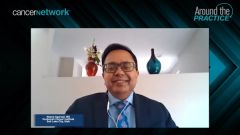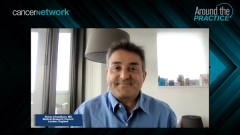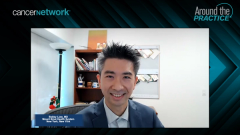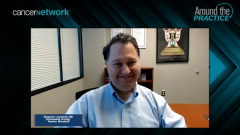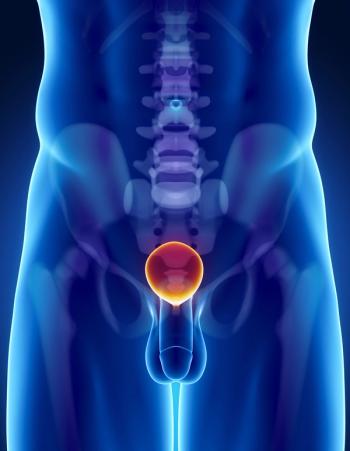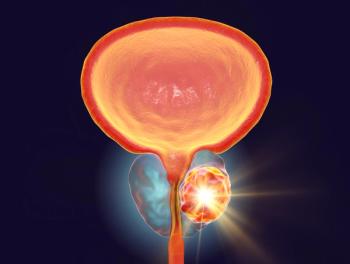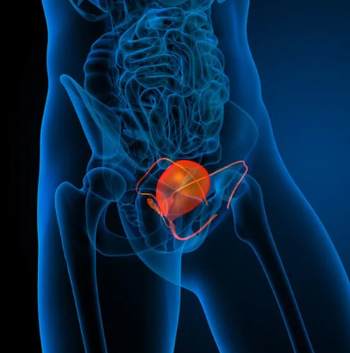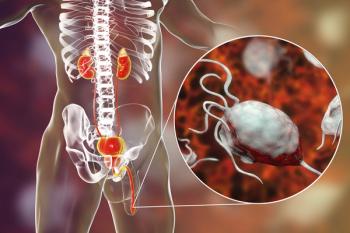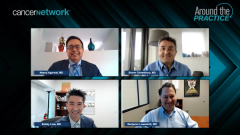
Case 1: Frontline Therapy in 63-Year-Old Man With High-Volume mCSPC
After reviewing a patient scenario of metastatic castration-sensitive prostate cancer, expert panelists break down frontline treatment options in this setting.
Episodes in this series

Transcript:
Neeraj Agarwal, MD: Welcome to this cancer network around the practice program on recent advances in the treatment of prostate cancer. I’m your host, Dr Neeraj Agarwal. I am a professor of medicine, Presidential Endowed Chair of Cancer Research at the Huntsman Cancer Institute in Salt Lake City, Utah, and director of the genitourinary oncology program. I have a great panel of experts who have joined me today. I’d like to invite my esteemed fellow panelists to introduce themselves. Let’s start with Dr Simon Chowdhury.
Simon Chowdhury, MD: Thank you Neeraj. It’s lovely to see you and thank you so much for the invitation to be involved today and to work with you and the other panelists. My name is Simon Chowdhury. I’m a medical oncologist based in London. I do my research at the Medical Research Council.
Neeraj Agarwal, MD: Dr Liaw?
Bobby Liaw, MD: Hi, how are you? My name is Bobby Liaw, and I am a genitourinary oncologist at Mount Sinai in New York, New York. I also serve as clinical director for GU [genitourinary] oncology for the Mount Sinai Health System.
Neeraj Agarwal, MD: Dr Lowentritt?
Benjamin Lowentritt, MD: Yes, thank you. I’m Ben Lowentritt and I’m a urologist. I practice at Chesapeake Urology where I direct our comprehensive prostate cancer program. Thank you for having me.
Neeraj Agarwal, MD: Thank you again all of you for joining me. Today we are going to discuss available evidence and key updates from recent studies in the context of metastatic castration-sensitive prostate cancer. We will review these data and slides in the context of prostate cancer treatment landscape and discuss how we can apply the evidence to our clinical practice to improve the outcomes of our patients. Let’s begin with a case which will be presented by Dr Chowdhury.
Simon Chowdhury, MD: This is an interesting case. It’s a gentleman who presented first in April 2019. He’s 63 years old. He presents with urinary tension and fatigue, a common symptomatic presentation. He has no past medical history of note and the blood tests that are relevant is a PSA [prostate-specific antigen] that’s raised at 50 ng/mL. He goes on to have staging that shows localized disease in his prostate and a biopsy that shows a Gleason score of 4 + 4 = 8, and 10 out of 12 cores. The patient is active and well and he’s offered all radical options and goes for radical prostatectomy. The pathology confirms a T3 carcinoma with negative margins and confirms that he has Gleason 8 disease, and no lymph nodes are involved. Subsequently the patient is followed up but moves location and is lost to follow-up. He re-presents in July 2022 and at that stage he has a PSA of 45.2 ng/mL and he’s anemic with a hemoglobin level of 9.7. He quite rightly undergoes classical stage investigations with a bone scan, and this shows 6 bone lesions including 2 in the left femur. His CT scan of the abdomen and pelvis shows evidence of retroperitoneal lymphadenopathy but no evidence of other visceral disease. His performance status remains excellent at 0. The only comorbidity he has is well-controlled hypertension with medication. The patient comes in for a discussion about further treatment and he wants to have the best and most aggressive treatments, as lots of our patients do, and the option is made to treat him with androgen deprivation therapy and apalutamide, which is started.
Neeraj Agarwal, MD: This is great thank you, Simon. I would like to start with asking you to share your initial impression of the patient case. How did you come up with the diagnosis? What led you to choose the treatment with ADT [androgen deprivation therapy] plus apalutamide, which I think is a standard-of-care option for these patients?
Simon Chowdhury, MD: Both of us have been very involved in the TITAN study as 2 of the clinical chairs where that’s concerned so we have a very large experience with apalutamide. I think cases like this we are seeing in our practice, particularly during COVID-19 where patients quite rightly stayed away from hospital or were lost to follow-up. It was much harder for patients, their relatives, and for clinicians and other practitioners following up with these patients. It was hard to get blood tests and patients did drop out of the system certainly in the UK [United Kingdom]. I know you have a very rigorous system at the Huntsman, but I think not everywhere is the Huntsman; not everywhere has you looking after them. I think the data here on patients with relapsed disease after radical treatment isn’t as common as we see for de novo metastatic disease, which makes the bulk of patients in the clinical trials. However, we know that there was a significant subgroup in the TITAN study, and we know that subgroup continued to show a benefit. I think this is a very reasonable treatment; the best evidence supports apalutamide and enzalutamide from the ARCHES study, but I think this is a very reasonable treatment. Certainly in my own practice we have a lot of experience with apalutamide from TITAN for routine clinical practice and the use of the drug from SPARTAN in the non-metastatic CRPC [castration-resistant prostate cancer] setting. I think this is good treatment; the advantages of doublets rather than androgen deprivation therapy alone has been shown and does show a very significant benefit. I think sometimes we underestimate that. Even with someone like this who has poor-prognosis, high-volume disease, I think this isn’t someone with a super scan that PSA is not several hundred. Sometimes we can underestimate the disease and the lethality of disease in a man who has many years to live and is a young man for the prostate cancer population, so I think this is very good treatment.
Neeraj Agarwal, MD: For the viewers you made the diagnosis of high-volume, non–de novo metastatic castration sensitive prostate cancer and patient was started on ADT plus apalutamide. I’ll come to Dr Liaw. Bobby, in your clinic, how do you decide between the available options for a given patient? I’d like to start by asking you about the treatment options you discuss with your patient with a diagnosis like this who has high-volume, non–de novo metastatic CSPC [castration-sensitive prostate cancer]. What are the treatment options you offer to your patient?
Bobby Liaw, MD: Well, this is a big question. We actually have multiple different recent studies that have shown us by taking some of the drugs that we use to reserve for more castration-resistant disease; by moving them into the hormone-sensitive metastatic setting that it gives us a much more augmented kind of long-term disease benefit in terms of disease control and overall survival benefit. Classically I would say the 4 options that I usually will talk to a patient about who has high-volume disease is going to include docetaxel, apalutamide, such as what was done for this patient, abiraterone, and enzalutamide. In someone who might have, let’s say low-volume disease, sometimes there’s a good discussion as to whether we do prostate radiation or not. In this patient’s case he doesn’t have a prostate anymore so we wouldn’t talk about that, but for de novo metastatic low-volume disease you might think about that. Oftentimes the question comes up, how do we pick and choose which of these 4 agents that we use in terms of systemic therapy? I don’t think that anyone has necessarily the right answer. A lot of times it does come down to the patient themselves, their characteristics. In a patient like this who has an excellent performance status, otherwise young, very few comorbidities, I think he’s an option for all treatment options vs some people might have more issues with steroid use so things like abiraterone may be a little harder for us to challenge them with. In some patients who have hepatic or renal insufficiency, they might not be quite as good a candidate for chemotherapy. One last thing that sometimes comes into the mix—I don’t know if it’s as big of an issue in the UK but here in the US there are still some cost issues with medications. For drugs like abiraterone which are off patent at this point, the price point might be a little bit more attractive vs a drug like enzalutamide or apalutamide that are still branded.
Neeraj Agarwal, MD: That’s a great synopsis, and thank you so much for summarizing such a large amount of data literally in 2 minutes.
Transcript edited for clarity.
Newsletter
Stay up to date on recent advances in the multidisciplinary approach to cancer.


